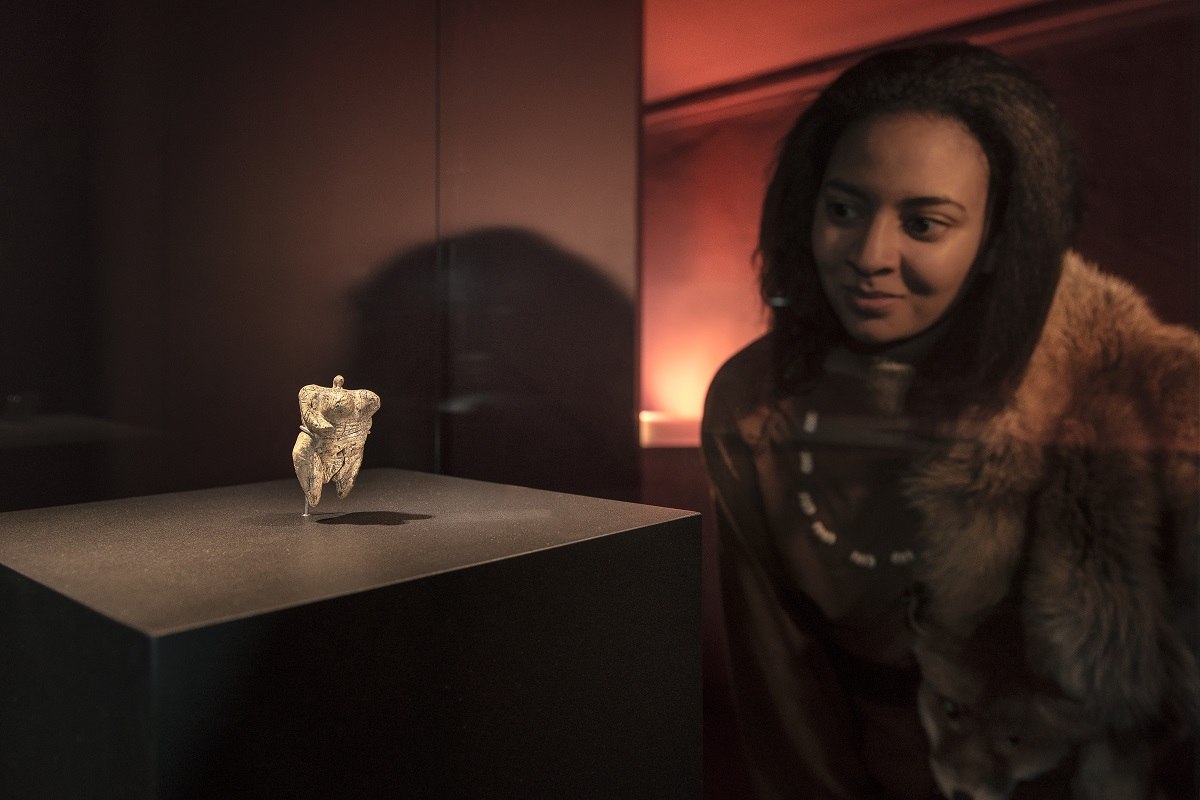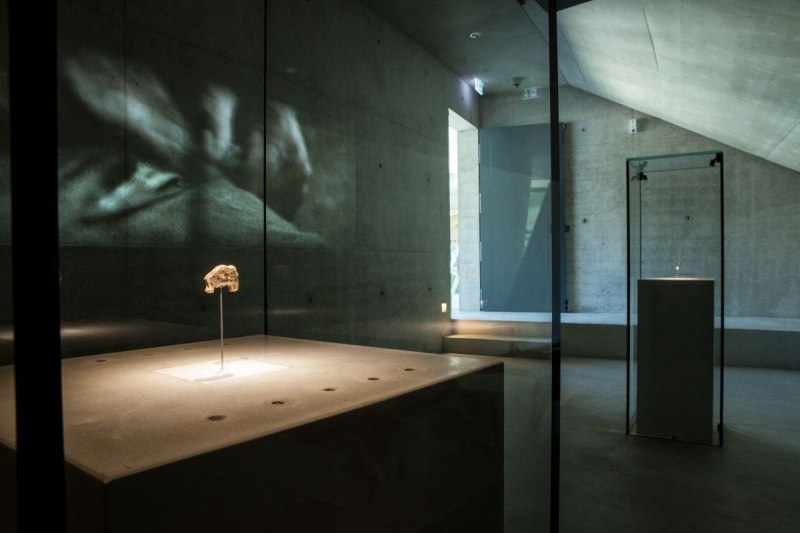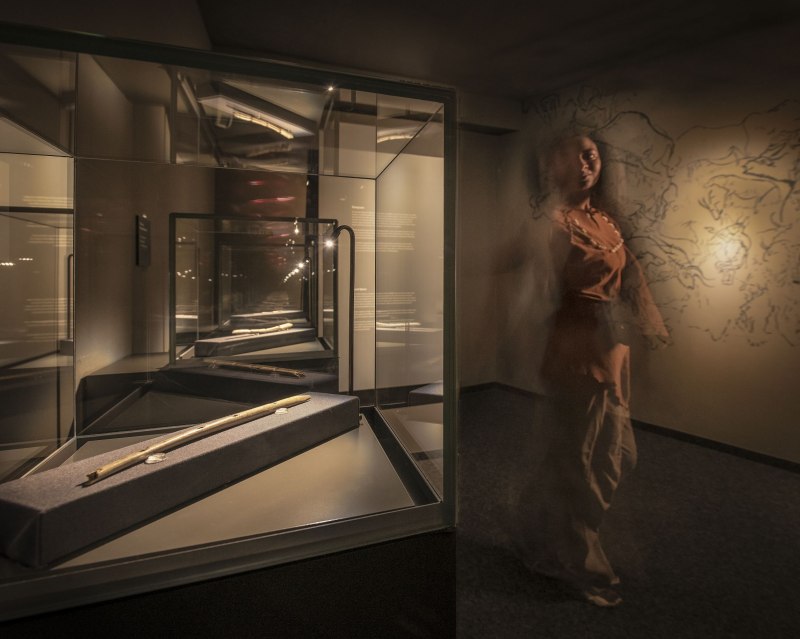Art from the Ice Age
The cradle of human culture - found in caves in the Swabian Alb! With an age of around 40,000 years works of art such as the Lion Man, the little Mammoth or the Venus from the Hohle Fels are the oldest works of art in the world. Masterfully carved from mammoth tusk, the figures are spectacular objects in an ensemble of Paleolithic ivory figures and instruments from caves in the Swabian Alb. These caves were featured as UNESCO World Heritage in July of 2017. Discover the history of the World Heritage caves and marvel at the fascinating works of art.
World Heritage Caves
More than 40,000 years ago, anatomically modern humans (Homo sapiens) spread across Europe, settling in the Swabian Alb as well. They left behind material culture from this time, especially stone artifacts, utensils and tools made of bone and ivory. These caves in the Swabian Alb play a special role in this, as jewelry and art objects and musical instruments were discovered here during excavations - the world's oldest evidence of mobile figurative art. By recognizing the caves as a World Heritage Site, UNESCO is paying tribute not only to the outstanding universal significance of the finds for mankind, but also to the decades of painstaking work by all the archaeologists and geologists involved in the research and excavation.
Bocksteinhöhle
Cave
Bissingen ob Lontal
The Bocksteinhöhle is part of the UNESCO World Heritage Site "Caves and Ice Age Art in the Swabian Jura" and freely accessible. Finds from it can be dated back to 50,000 to 70,000 years ago. The Bocksteinhöhle is thus considered to be the oldest settlement complex of the Neanderthal in southern Germany.
Hohlenstein
Cave
Asselfingen
Site of the world-famous 40,000-year-old mammoth ivory figure "Lion Man" and part of the UNESCO World Heritage Site "Caves and Ice Age Art in the Swabian Jura".
Sirgensteinhöhle
Cave
Blaubeuren
The Sirgenstein is located between Blaubeuren and Schelklingen on the western side of the valley. A mighty rock mass rises above the cave, on which a castle stood in the Middle Ages. The cave is part of the UNESCO World Heritage Site "Caves and Ice Age Art in the Swabian Jura".
Hohle Fels
Cave
Schelklingen
The Hohle Fels in the Achtal near Schelklingen is one of the largest hall caves in the Swabian Alb. Excavations are still taking place in the Hohle Fels. Probably the most important find is the "Venus vom Hohle Fels" - the oldest figure of a woman as well as the oldest figurative representation of a human being.
Geißenklösterle
Cave
Blaubeuren-Weiler
The Geißenklösterle is located south of Blaubeuren-Weiler in the Bruckfels massif above the Ach river. The find layers reach down to the time of the Neanderthals.
Exhibition Venues
You can marvel in the treasure chambers of the museums: About the creativity of the Ice Age artists. The largest and most spectacular figure is certainly the Lion Man, but finds such as the "Venus vom Hohle Fels", elaborate animal sculptures such as the mammoth and wild horse also impress with their detailed and fine workmanship. And in all these museums, in addition to the fascinating works of art, you will discover many more traces from the lives of our Stone Age ancestors.
Urgeschichtliches Museum
History museum
Blaubeuren
Museum of prehistory Blaubeuren – Where man came into being!
Museum of the University of Tübingen MUT Ancient Cultures
History museum
Tübingen
The "Vogelherd figurines" are among the most famous exhibits at the "Museum of the University of Tübingen MUT Ancient Cultures" at Hohentübingen Castle. They are among the oldest works of art known to mankind and are exhibits of the UNESCO World Heritage "Ice Age Art".
The Creation of the Works of Art
Here you can experience the life of glacial man very close and come along with them as they whittle their works of art. Let yourself be inspired and immerse yourself in the realm of the Ice Age artists.
The videos are in German, but there are English subtitles and they last approx. 1:30 minutes each.












